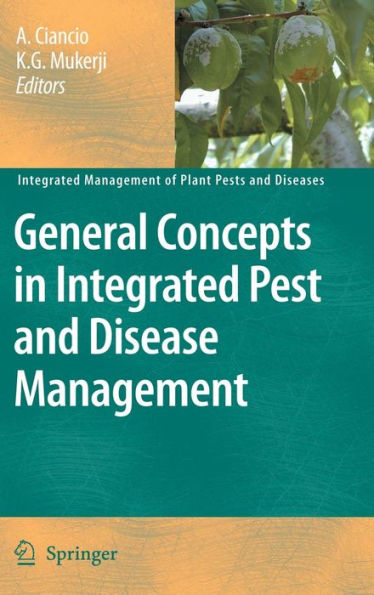General Concepts in Integrated Pest and Disease Management
The proposal for this series originated during a short term visit of Professor Mukerji to the Plant Protection Institute of CNR at Bari, Italy, in November 2005. Both editors agreed on the need to produce a volume focusing on recent advances and achievements which changed the practice of crop protection in the last decade. The opera rapidly evolved towards a long term editorial endeavour, yielding a mul- disciplinary series of five volumes. In view of environmental and health concerns, a determined effort is currently made in almost any agroecosystem in the world, to reduce and rationalize the use of chemicals (pesticides, fungicides, nemaides etc. ) and to manage pests/pathogens more effectively. This consciousness is not only related to the need of nourishing a still growing world population, but also derives from the impact of side effects of farming, like soil, water and environmental contamination, calling for a responsible conservation of renewable resources. There are increasing expectations at the producers and consumers levels, concerning low inputs agriculture and residues-free food. Disciplines like IPM/IDM (integrated pest management / integrated disease management) are now central to the science and technology of crop protection. In the classical version of IPM/IDM, a pesticide/fungicide is applied only when the pathogen population reaches a level that would lead to economic losses in the crop. In other words, classical IPM/IDM concentrates on reducing the numbers of noxious organisms through the application of agrochemicals.
1101668531
General Concepts in Integrated Pest and Disease Management
The proposal for this series originated during a short term visit of Professor Mukerji to the Plant Protection Institute of CNR at Bari, Italy, in November 2005. Both editors agreed on the need to produce a volume focusing on recent advances and achievements which changed the practice of crop protection in the last decade. The opera rapidly evolved towards a long term editorial endeavour, yielding a mul- disciplinary series of five volumes. In view of environmental and health concerns, a determined effort is currently made in almost any agroecosystem in the world, to reduce and rationalize the use of chemicals (pesticides, fungicides, nemaides etc. ) and to manage pests/pathogens more effectively. This consciousness is not only related to the need of nourishing a still growing world population, but also derives from the impact of side effects of farming, like soil, water and environmental contamination, calling for a responsible conservation of renewable resources. There are increasing expectations at the producers and consumers levels, concerning low inputs agriculture and residues-free food. Disciplines like IPM/IDM (integrated pest management / integrated disease management) are now central to the science and technology of crop protection. In the classical version of IPM/IDM, a pesticide/fungicide is applied only when the pathogen population reaches a level that would lead to economic losses in the crop. In other words, classical IPM/IDM concentrates on reducing the numbers of noxious organisms through the application of agrochemicals.
219.99
In Stock
5
1

General Concepts in Integrated Pest and Disease Management
359
General Concepts in Integrated Pest and Disease Management
359Hardcover(2007)
$219.99
219.99
In Stock

Product Details
| ISBN-13: | 9781402060601 |
|---|---|
| Publisher: | Springer Netherlands |
| Publication date: | 09/10/2007 |
| Series: | Integrated Management of Plant Pests and Diseases , #1 |
| Edition description: | 2007 |
| Pages: | 359 |
| Product dimensions: | 6.00(w) x 9.30(h) x 0.80(d) |
About the Author
From the B&N Reads Blog
